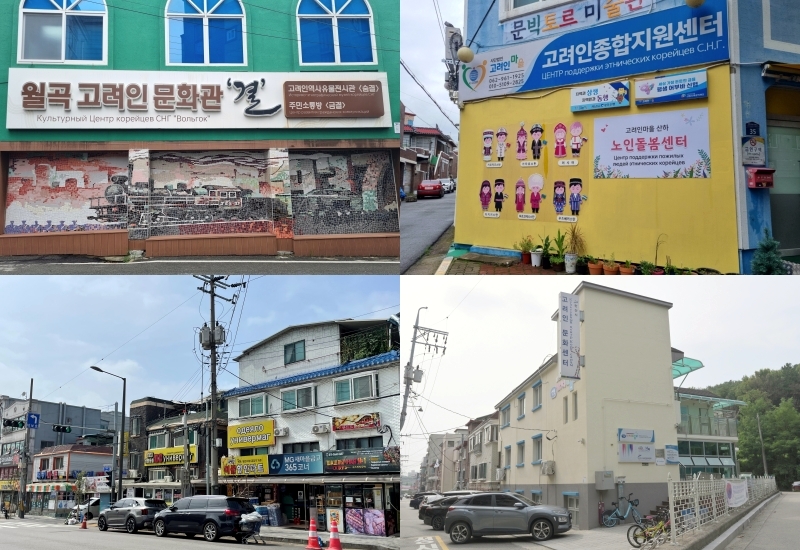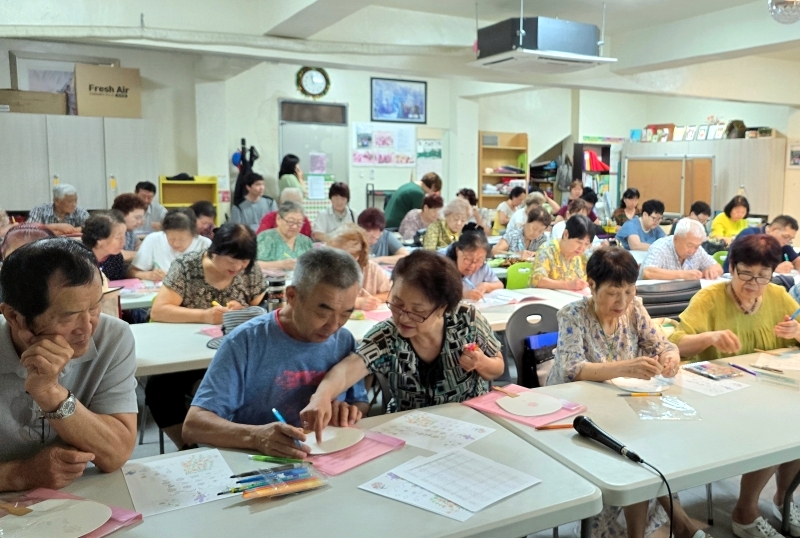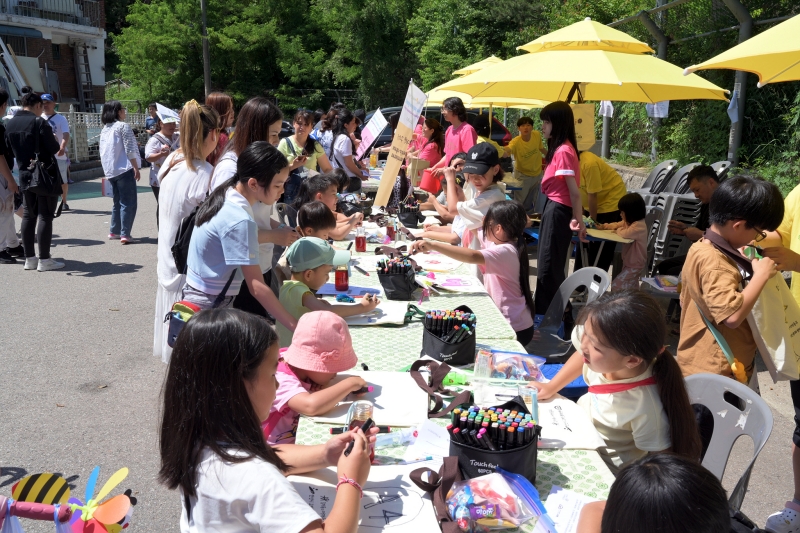Information Center
- Main page
- Information Center
- Government News
Government News
- Source
- KOREA.net
- Date
- 2024.07.26
This year marks the 160th anniversary of Korean immigration to Russia. From 1864 to 1945, Koreans moved to Russia and the Soviet Union area for reasons like the pursuit of agriculture, pro-independence movement against Japanese colonial rule and forced mobilization. Those who moved to Russia and Soviet republics during this time and their descendants are called Goryeoin. In 2004, an amendent to Korea's Act on the Immigration and Legal Status of Overseas Koreans recognized Goryeoin as "overseas brethren." As the requirements for the F-4 (overseas Korean) visa grew less strict, the number of Goryeoin seeking to move to their motherland has increased. In search of jobs, such people began settling around leading industrial complexes nationwide, raising the number of Goryeoin villages to around 30. Two Korea.net staff writers visited two leading villages, one in the Weolgok-dong neighborhood of Gwangsan-gu District in Gwangju and the other in the Seonbu-dong neighborhood of Ansan, Gyeonggi-do Province. |

Clockwise from left are Weolgok Goryeoin Culture Center in the Weolgok-dong neighborhood of Gwangsan-gu District in Gwangju; Gwangju Goryeoin General Support Center; and Ansan Goryeoin Culture Center and stores with Russian-language signs in the Seonbu-dong neighborhood of Ansan, Gyeonggi-do Province. (Aisylu Akhmetzianova, Lee Dasom and Ansan Goryeoin Culture Center)
By Aisylu Akhmetzianova and Lee Dasom
Two Korea.net staff writers on July 9 visited a Goryeoin village in Gwangju and another in Ansan, Gyeonggi-do Province, on July 11. As they walked down the streets, signs both in Korean and Russian caught their eyes.
Lining the streets were stores selling Russian foods and desserts and elementary students in groups standing in front of convenience stores speaking Russian.
When Shin Joya, a third-generation Goryeoin, first moved to Gwangju in 2022, the Goryeoin village in the Weolgok-dong neighborhood of the city's Gwangsan-gu District, one of the largest of its kind in the country, appeared vastly different. Three to four Goryeoin families were the first to settle there and are considered the trailblazers of a reverse diaspora. Their relatives and acquaintances from Uzbekistan later gathered there to pursue the "Korean Dream."
Now dubbed the godmother of Goryeoin, Shin went out of her way to help newcomers look for housing or jobs. This helped companies there overcome labor shortages, and they provided daily necessities such as chairs and refrigerators to express their gratitude.
Most Goryeoin living in Korea are not fluent in Korean. Thus the Goryeoin support center in Gwangju was opened to listen to the concerns of Goryeoin unable to speak Korean, help find solutions and connect them with jobs.
Word of mouth about the center's activities and support from civic groups spread, leading many Goryeoin to flock to Gwangju and forming a Goryeoin community in Weolgok-dong.
The number of Goryeoin in the neighborhood is an estimated 7,000. Helping its residents in a variety of ways, the community there runs a general support center, daycare facility, the radio station GBS Goryeo Broadcast, Korean-language institute and nursing home.
Shin is the representative of Gwangju Goryeoin Village and has led the settlement of such people in Korea over the past 20 years. In 2018, she received the Presidential Award for helping move to Korea Goryeoin who were the descendants of pro-independence activists.
When asked what her most rewarding experience was, she said inviting to Korea Goryeoin from Ukraine in 2022. She provided support ranging from airfare, housing deposits, two months of rent and daily necessities to around 900 ethnic Koreans who fled their homes in Ukraine due to war.
On her plans, Shin said, "My goal is to ensure that Goryeoin who come to Korea get Korean citizenship and become full members of our society instead of foreign residents."

Elderly Goryeoin on July 11 attend a cultural education class to prevent Alzheimer's at a geriatric care center for Goryeoin at Gwangju Goryeoin General Support Center. (Gwangju Goryeoin General Support Center)
The Ministry of Justice on July 19 released monthly statistics on immigration and policy toward foreign residents giving a breakdown of Goryeoin in the country: 43,448 were from Uzbekistan; 38,711 from Russia; 22,932 from Kazakhstan, 4,248 from Kyrgyzstan and 3,406 from Ukraine.
Around 23,000 Goryeoin lived in Ansan as of May, making the city home to the country's largest community of its kind. Most are relatives and descendants of Goryeoin who went there first to work.
These people struggle to communicate in Korean unlike immigrants who came to the nation on marriage or work visas. Because of the difficulties Goryeoin face, the place they go to for help is Ansan Goryeoin Culture Center.
Center chief Kim Young-sook in 2007 first formed relations with such people through the corporation Peace Asia. In 2011, she launched Neomeo, an organization to help Goreyoin struggling with communication and problems in daily life, and began offering Korean-language courses.
Her sincerity in helping Goryeoin impressed the Ansan city government, which in 2017 designated Neomeo to run the center.
The facility's three main roles are running an education project with customized programs for Korean-language education, arts, physical education and cultural experiences for adults, children and youth; a support project for interpretation and translation consultations on complaints over labor and daily life; and an exhibition on the history of Goryeoin to promote understanding between Koreans and Goryeoin.
Kim said, "Goryeoin are legally overseas Koreans but in reality, they live like foreigners so they need institutional and policy consideration in many ways."
"They are a minority but still precious members of our society and workforce, as well as overseas brethren who share the same ethnic identity, history and cultural homogeneity."

Ansan Goryeoin Culture Center on June 3 holds an event to mark International Children's Day (June 1). (Ansan Goryeoin Culture Center)
Ansan Goryeoin Culture Center holds the annual Arirang Festival nationwide to commemorate the history of Goryeoin migration. Large-scale events in September will mark the 160th anniversary of Korean immigration.
Kim said, "We will hold interactive programs like Goryeoin cultural events and introduction of Goryeoin cuisine to inform Koreans of the history of Goryeoin migration and instill in Goryeoin a sense of identity and legitimacy that is fading."
"(Through the center), I hope Goryeoins can develop into talented human resources that play a networking role between Goryeoin residing in Korea and those abroad and live without forgetting their identity."
aisylu@korea.kr